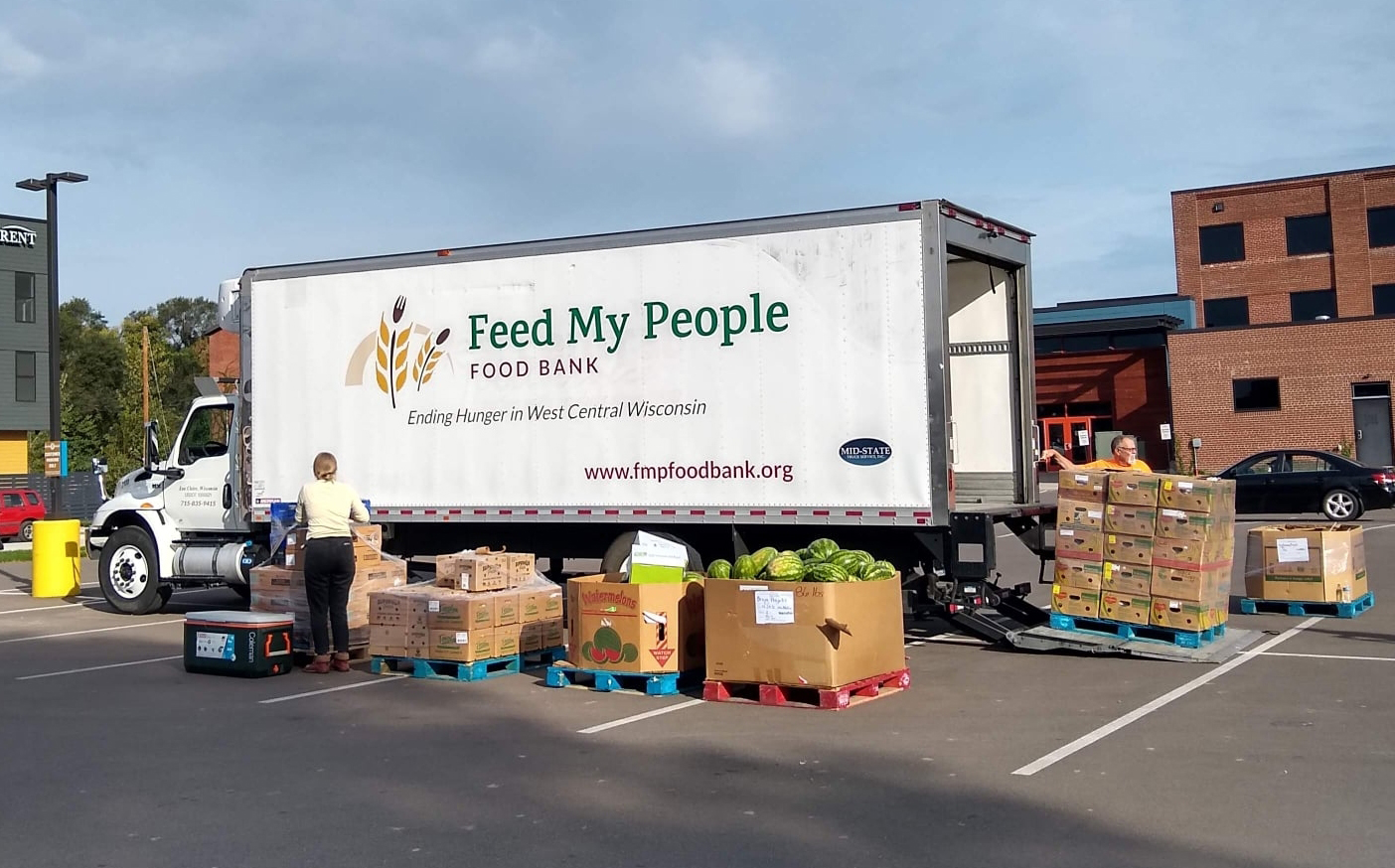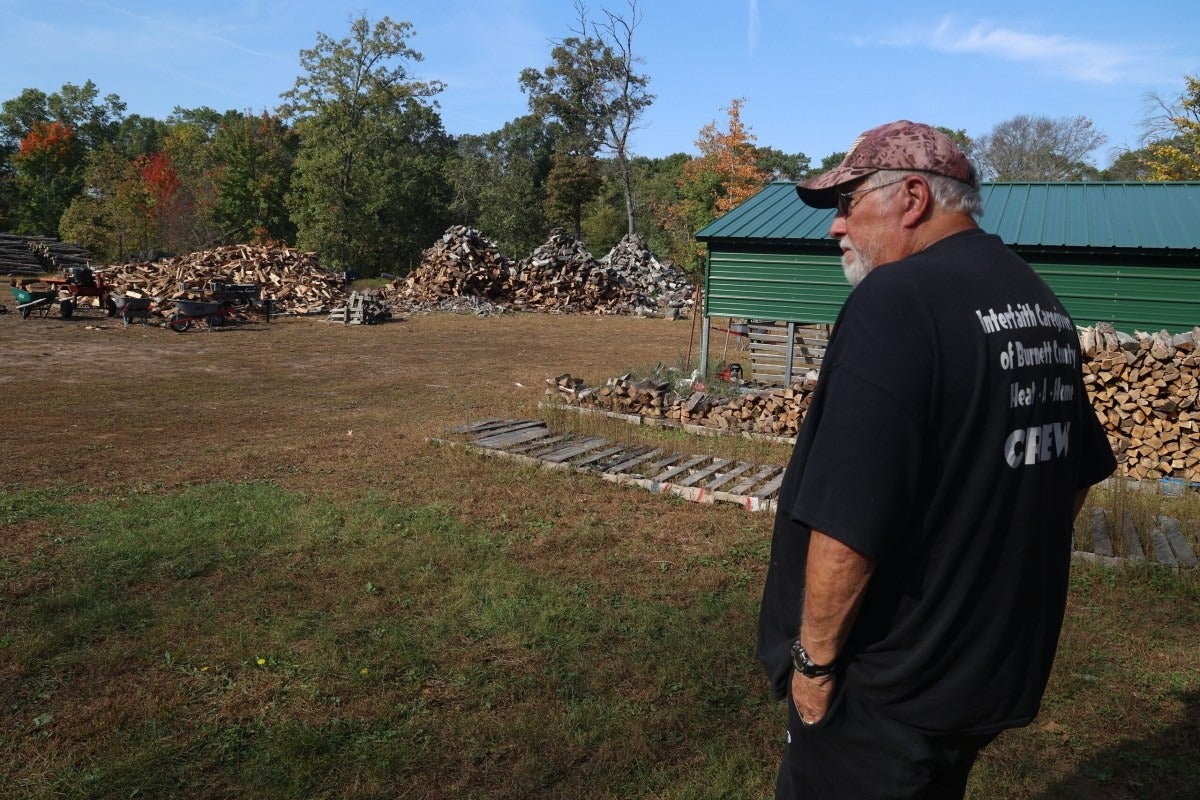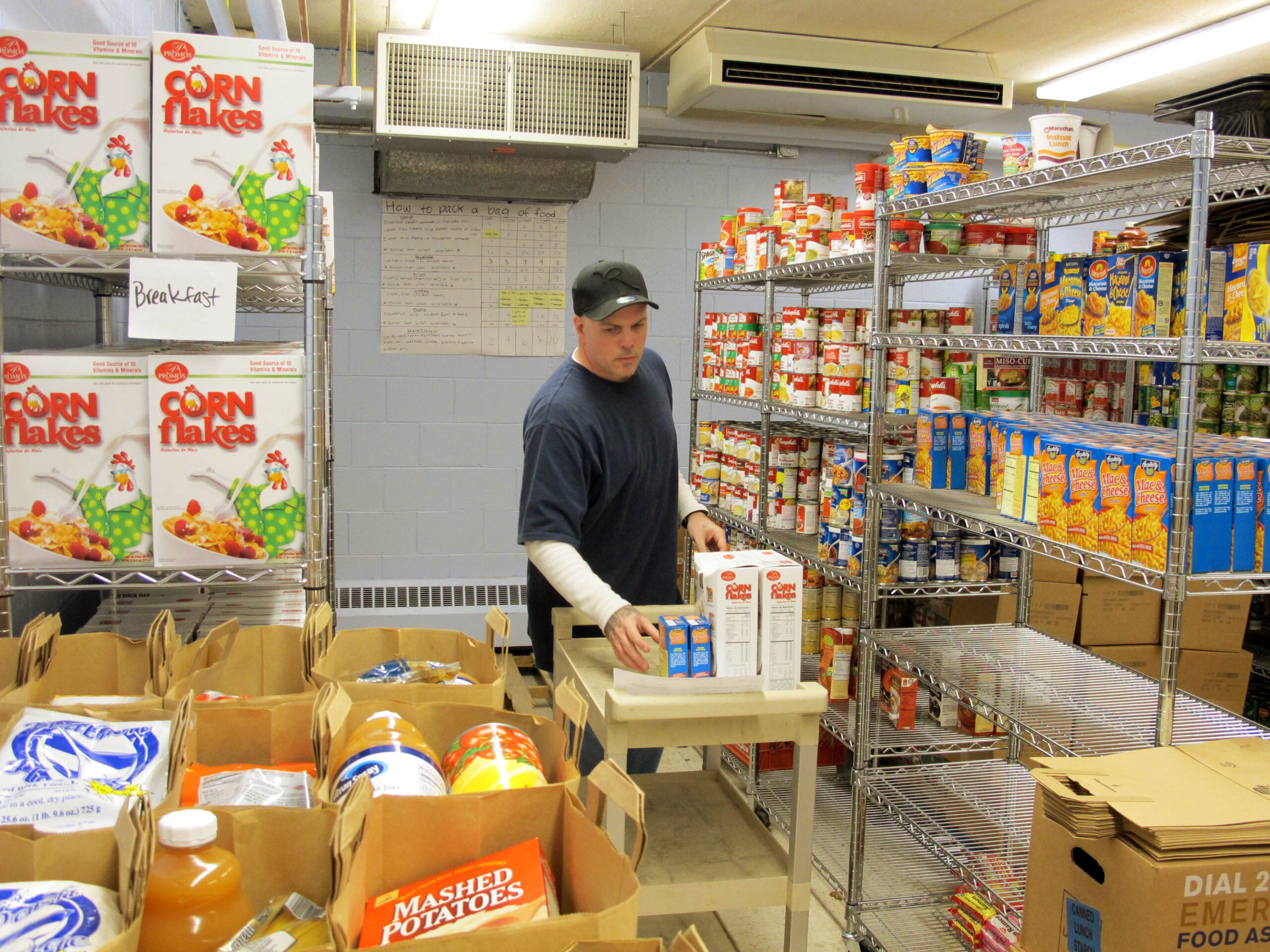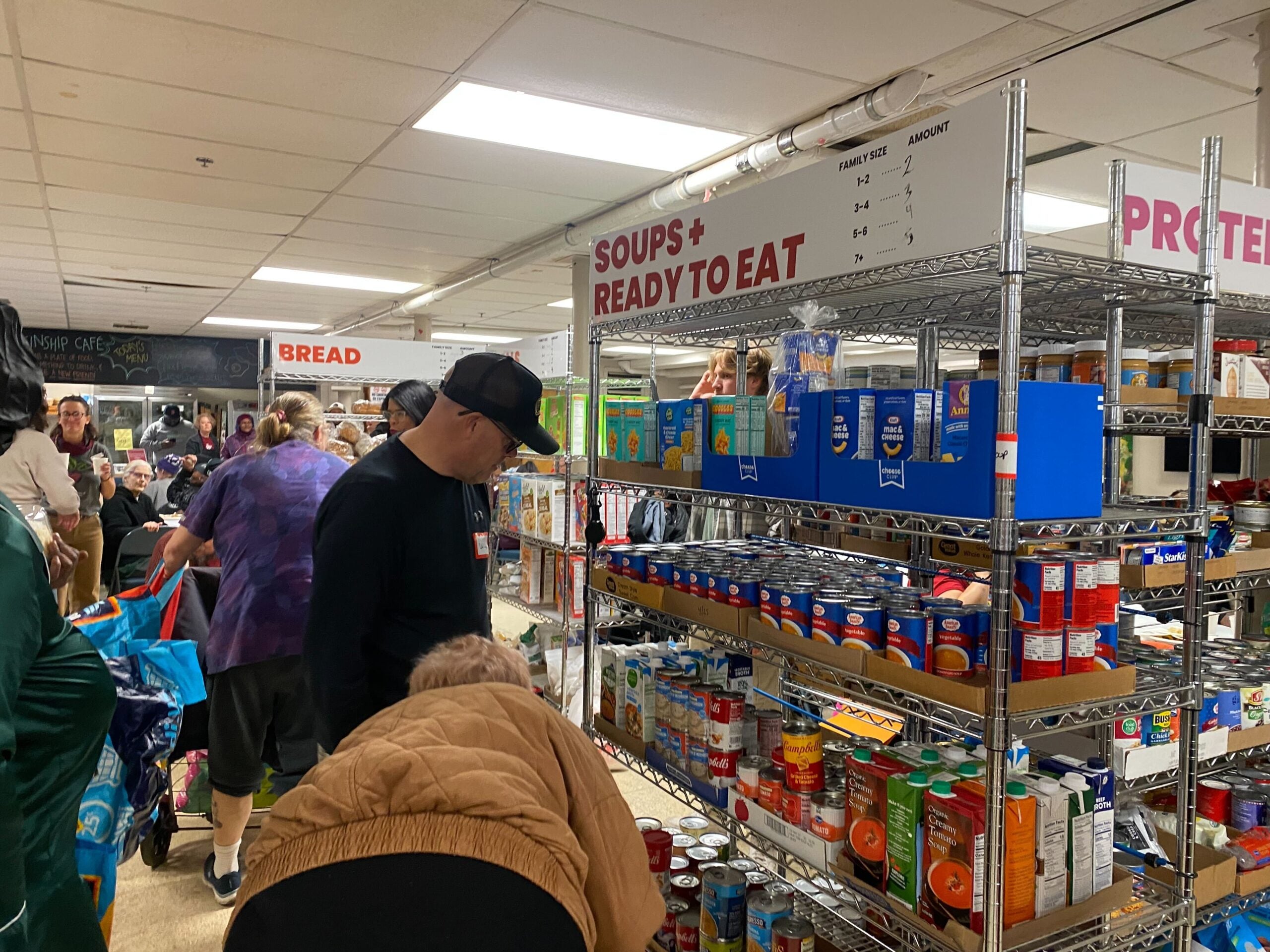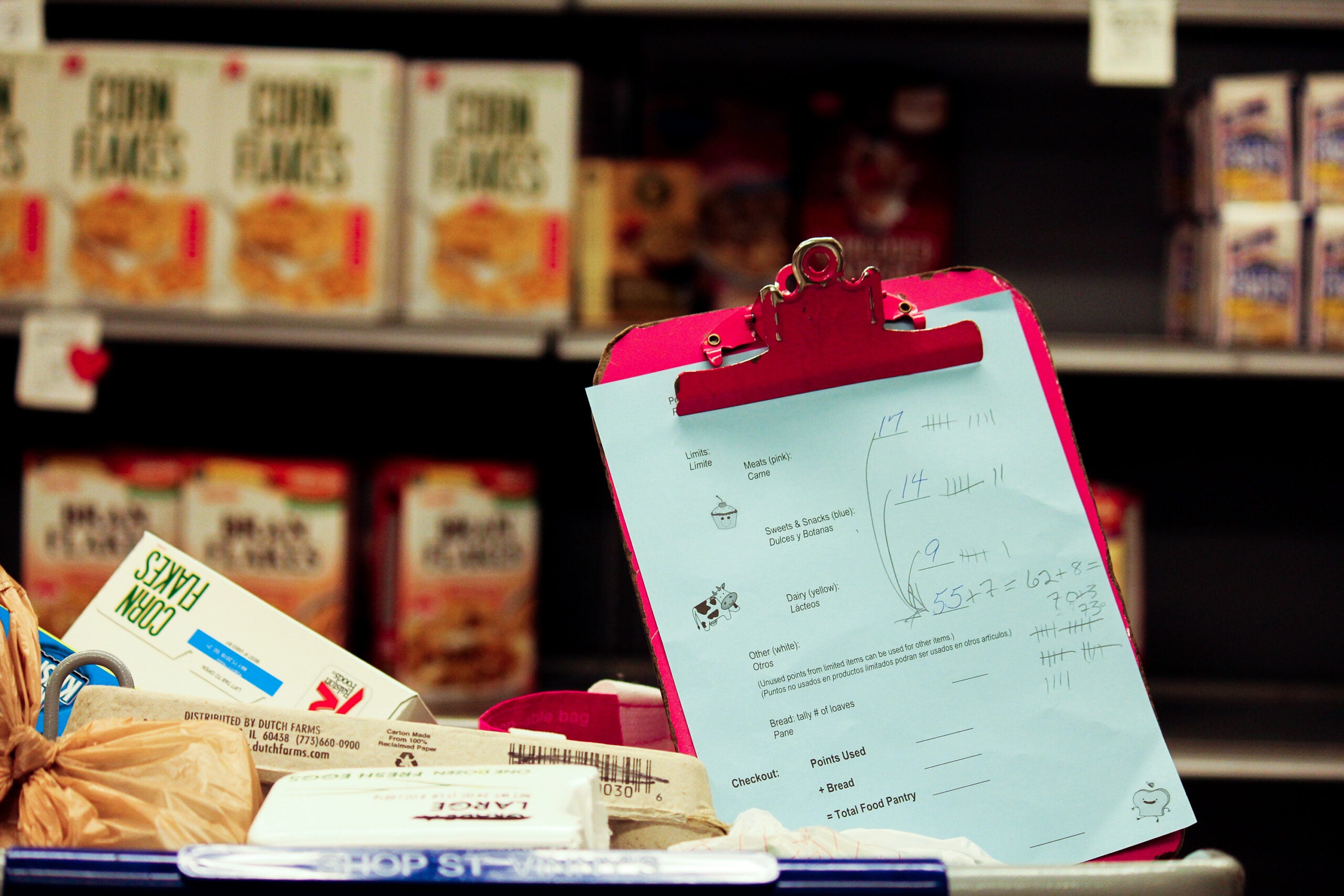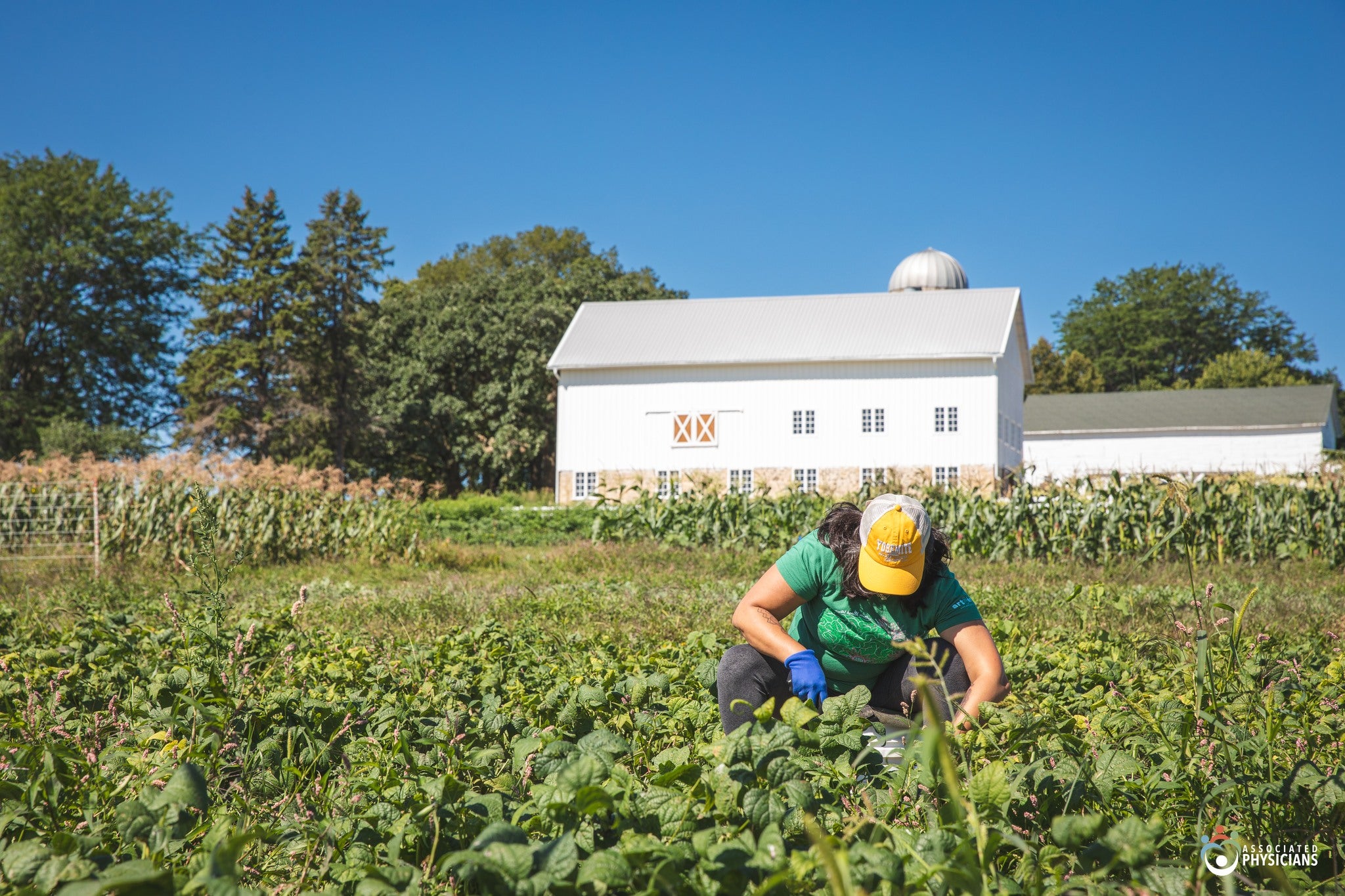Inflation is driving demand for the services of Wisconsin food banks and forcing the nonprofits to consider how they’re using resources and spending funds.
According to the U.S. Department of Agriculture, the Consumer Price Index that tracks inflation across the economy rose 7 percent for all food items from January of last year to January 2022.
Gas prices have also climbed in recent months. According to AAA, as of Thursday Wisconsin’s average regular gas price stands at about $3.94 a gallon, down slightly from earlier in the month but up significantly from about $2.66 a year ago.
News with a little more humanity
WPR’s “Wisconsin Today” newsletter keeps you connected to the state you love without feeling overwhelmed. No paywall. No agenda. No corporate filter.
Nancy Renkes is executive director of Feed My People Food Bank, which is based in Eau Claire and serves 14 counties in west-central Wisconsin. She said while January and February were relatively quiet months, 140 families came to a food distribution event in Eau Claire a few weeks ago that typically brings in around 80 families.
“We’re starting to see everything tick up again,” Renkes said. “I think inflation has a lot to do with that.“
Renkes said while she doesn’t expect demand to go back to the levels food banks saw in the early days of the COVID-19 pandemic, she does expect demand to increase.
The costs that affect average people also affect how the food bank does its work, she said.
“We’re feeling the price increases, we’re also feeling freight increases,” Renkes said. “Transportation has gone up dramatically, as well as fuel for our trucks, so everything you’re really feeling at home, we’re sort of feeling as well here at the food bank.”
Kris Tazelaar, who serves as director of marketing and communications for Second Harvest Foodbank in Madison, said many of the food products Second Harvest buys have jumped in price 10 to 25 percent over the past year.
“When you multiply that over the millions of pounds of food that we distribute, it can get pretty costly,” Tazelaar said.
Renkes said the “generosity of our donors” has enabled Feed My People to handle those cost increases in the short term, but there are still worries around the long-term effects of inflation.
“What it’s causing us to do is really pause and make sure every dollar we’re spending really benefits hungry people,” Renkes said. “There might be some things that we would love to have in our warehouse, but we can’t do it. We have to make those hard choices because we always have to have the staples, we always have to have those basic things.”
She said food donations, volunteers and money all help Feed My People and other food banks provide services.
Tazelaar said there’s been uncertainty over demand for those services from month to month.
“Since the pandemic, it’s really been ebbs and flows,” Tazelaar said. “The great thing about what we do is we’re agile, we’re nimble, we’re flexible, and so we can make sure that we are there for the need.”
Tazelaar also noted: “Hunger makes everything harder.”
“It means that you’re not being able to provide the type of nutrition to your kids that they really need through their formative years,” Tazelaar said. “All different types of struggle just makes life harder.”
[[{“fid”:”1685121″,”view_mode”:”full_width”,”fields”:{“format”:”full_width”,”alignment”:””,”field_image_caption[und][0][value]”:”%3Cp%3EFeed%20My%20People%20Food%20Bank’s%20warehouse%20is%20stocked%20with%20groceries%20to%20address%20hunger%20in%20western%20Wisconsin.%20Executive%20director%20Nancy%20Renkes%20said%20the%20long-term%20effects%20of%20inflation%20are%20worrisome%20for%20the%20nonprofit%20that%20serves%20a%2014-county%20area.%20%3Cem%3EPhoto%20courtesy%20of%20Feed%20My%20People%20Food%20Bank%3C%2Fem%3E%3C%2Fp%3E%0A”,”field_image_caption[und][0][format]”:”full_html”,”field_file_image_alt_text[und][0][value]”:”Feed My People Food Bank”,”field_file_image_title_text[und][0][value]”:”Feed My People Food Bank”},”type”:”media”,”field_deltas”:{“1”:{“format”:”full_width”,”alignment”:””,”field_image_caption[und][0][value]”:”%3Cp%3EFeed%20My%20People%20Food%20Bank’s%20warehouse%20is%20stocked%20with%20groceries%20to%20address%20hunger%20in%20western%20Wisconsin.%20Executive%20director%20Nancy%20Renkes%20said%20the%20long-term%20effects%20of%20inflation%20are%20worrisome%20for%20the%20nonprofit%20that%20serves%20a%2014-county%20area.%20%3Cem%3EPhoto%20courtesy%20of%20Feed%20My%20People%20Food%20Bank%3C%2Fem%3E%3C%2Fp%3E%0A”,”field_image_caption[und][0][format]”:”full_html”,”field_file_image_alt_text[und][0][value]”:”Feed My People Food Bank”,”field_file_image_title_text[und][0][value]”:”Feed My People Food Bank”}},”link_text”:false,”attributes”:{“alt”:”Feed My People Food Bank”,”title”:”Feed My People Food Bank”,”class”:”media-element file-full-width”,”data-delta”:”1″}}]]
‘We proved that the food stamp program works’
Meanwhile, ongoing pandemic benefits for food programs are also impacting services at food banks.
Recipients of Wisconsin’s FoodShare program have been getting at least $95 in additional benefits a month during the federal state of emergency.
“They really help families make those ends meet,” Tazelaar said. “When you take that in combination with the increased cost of food at the grocery store, that really reduces the overall benefit that they’re getting … Depending on when those benefits are going to go away, that could really be a bit of a double whammy.”
Feed My People has one staff member who spends 20 hours a week helping people apply for the program.
“If you’ve never had to do that before, it can be very daunting. It can be very overwhelming at a point in your life when you’re in crises,” Renkes said.
Sherrie Tussler is the executive director of Hunger Task Force in Milwaukee. According to a report from the food bank, service demands hit record lows in 2021, even as it took on what Tussler called the “great responsibility” of serving people across the state.
“Our numbers are down right now overall, because we proved that the food stamp program works,” Tussler said. “Not only does the poor person not have to stand in line and beg at a church for help, they can feed their kids by shopping at the store, buying the things that they want, and then farmers and food producers know that there is a stimulated economy and that they are also going to be able to feed their kids because they can sell their goods.”
Tussler said once the federal emergency order ends and additional food benefits end, there could be a doubling of need at food banks across the state.
“What that means is a return to normalcy, but that normalcy means widespread hunger and homelessness for so many people in both rural and urban areas across the state,” Tussler said.
Tazelaar said foodbanks and FoodShare are the difference between being able to make ends meet or not being able to afford some expenses of living.
“That’s the everyday feet on the street difference that we’re making in the lives of the people that we support,” Tazelaar said.
Last month, President Joe Biden extended the state of national emergency around the COVID-19 pandemic that was set to expire at the start of this month. There’s no new end date set.
Renkes said she encourages people in need of help and people who know others who need help to contact their local food bank for information on services.
Tazelaar said while food banks can help at all times, “these are the times when we really prove why we’re here.”
“We can respond,” Tazelaar said. “We can respond to the pandemic, we can respond to the increased cost that inflation is causing. That’s why we’re here. That’s why people trust us.”
Wisconsin Public Radio, © Copyright 2026, Board of Regents of the University of Wisconsin System and Wisconsin Educational Communications Board.
